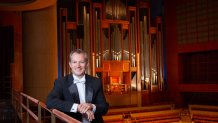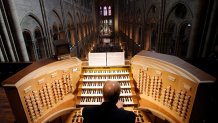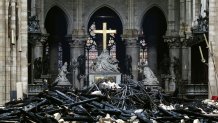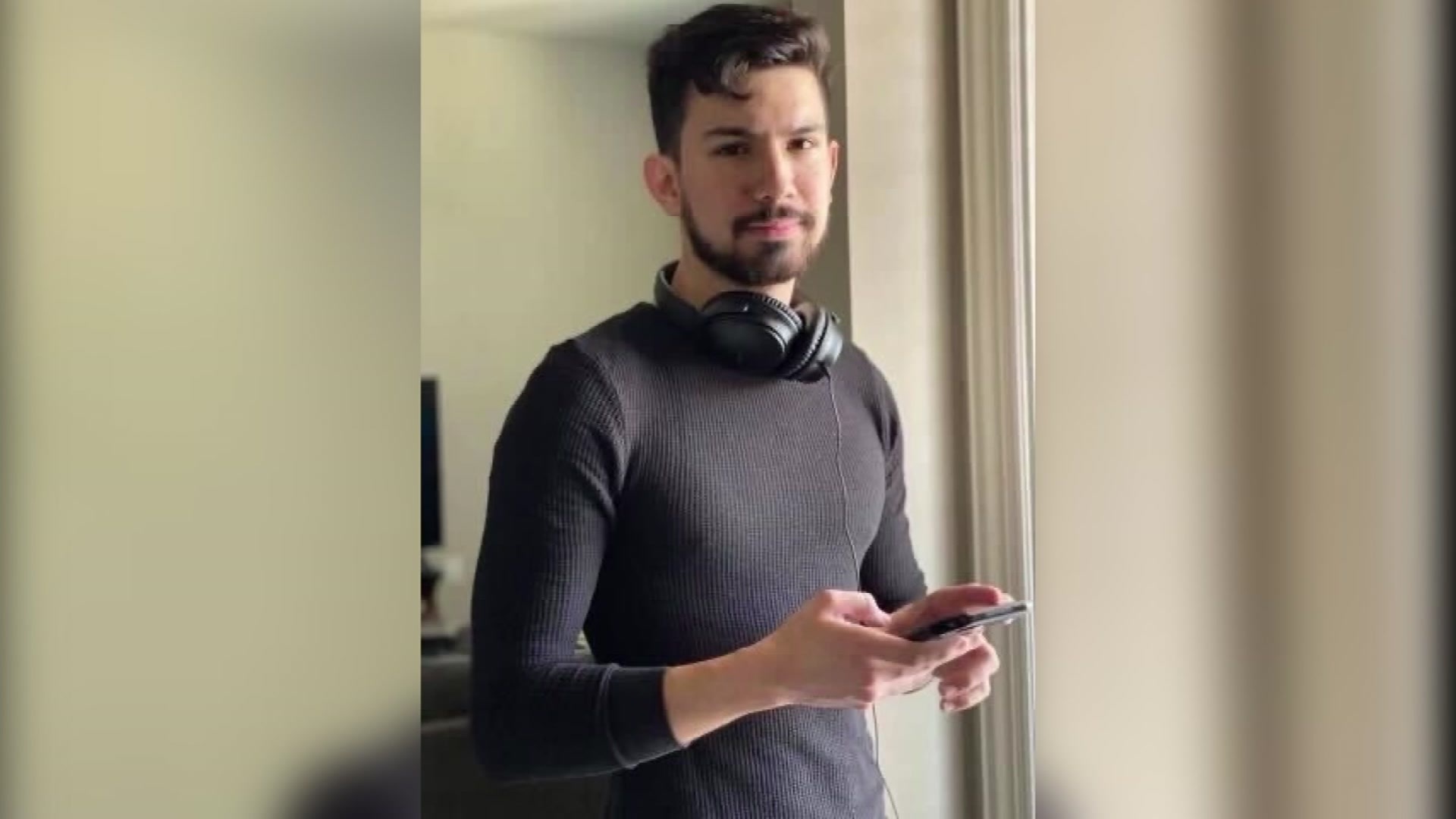Silhouetted by the glittering halo of Notre-Dame de Paris's west rose window, the cathedral's famed Grand Organ awaits restoration after a devastating fire on April 15. "Pipedreams Live! – Organ Recital Celebration of Notre-Dame de Paris" at the Meyerson Symphony Center on Nov. 17 celebrates the Grand Organ and gives North Texas organ lovers a chance to be a part of the restoration.
The recital, part of the Dallas Symphony Orchestra's Opus 100 Organ Series, is a tale of two organs. It will feature Bradley Hunter Welch, the DSO's Resident Organist, Philippe Lefebvre, one of three titular Notre-Dame de Paris organists, and Shin-Young Lee, a former student of Lefebvre who is married to a Notre-Dame organist.
During the concert, there will be an announcement from the stage to enable people to make voluntary donations for the restoration. "We've shared in the anguish of watching Notre-Dame burn, but now we can gather and celebrate the resurrection of the space and the organ," Welch said. "Music is a wonderful thing, but when you can connect people to a place, it makes it even more meaningful."

Welch became the DSO's Resident Organist in 2018. A native of Knoxville, Tenn., he first encountered the power of the instrument on a field trip to church with a pipe organ. "For me, before I even started piano lessons, I was always fascinated by the sound of the organ," Welch said. "I think it's the huge range of possibilities that makes it an exciting instrument to me."
Welch first heard the Lay Family Concert Organ as an undergraduate at Baylor University. In 2000, he played the organ for the first time as a part of the Dallas International Organ Competition. Welch admires the instrument for its sound and the role it plays in the concert hall.
"It really was at the beginning of the re-envisioning of the organ in a concert hall," Welch said. "You can hear this organ create a full wall of sound, which you need to stand up with the orchestra and chorus. It also has a lot of bass to fill out the lower sound of the orchestral instruments."
As Resident Organist, Welch oversees the organ and performs on a variety of DSO concerts. "The organ is sometimes a solo instrument, but when I'm playing with the orchestra, I am one member of the ensemble," Welch said.

The instrument of 4,535 pipes is an American relative of Notre-Dame's Grand Organ, with its French romantic influence. "Both of them are instruments that are known for their massive sonic impact," Welch said. "The Lay Family Organ has many stops that speak with a French accent. They are both awe-inspiring and I think some of that has to do with the space they live in," Welch said.

Lefebvre, a Notre-Dame organist since 1985, credits the heroism of Paris' firefighters for saving the cathedral and the Grand Organ, making the fire another chapter of the instrument's extraordinary history. "The fire just stopped at the nave," Lefebvre said. "The organ did not get water. We were lucky for that."
Local
The latest news from around North Texas.
Friedrich Schambantz built Notre-Dame's earliest organ in 1403. That organ was replaced between 1700 and 1738. It has been improved several times, using pipe work from Notre-Dame's earlier instruments and building on the best traditions of French organ building. Approximately 40% of its 8,000 pipes date from the 18th century. The organ's modernizations and ties to the past make it a versatile instrument. "You can play the music of the time with great sound," Lefebvre said.
The organ survived the French Revolution and two World Wars. One of its world-renowned organists, Louis Vierne, died while playing the Grand Organ during a recital in 1937. Olivier Latry's rendition of "La Marseillaise" on the Grand Organ united France in grief following a terrorist attack in November 2015. "When you play at Notre Dame, you're playing with centuries at your back," Lefebvre said.
The cathedral's architecture is an important part of the Grand Organ's majesty, with sound reverberating down the cathedral's long nave. "The acoustic of the church is so good. You play the sound of the church," Lefebvre said.
The pipes and the acoustics are Lefebvre's top concerns for the organ's restoration. Although the organ did not suffer water damage like the cathedral's choir organ, dust with particles of wood and lead covered the organ. "All of the pipes are full of that dust," Lefebvre said. Lefebvre explained at some point next year the pipes will be removed, cleaned and restored. During Paris' hot summer, the dust within the pipes remained dry. Humidity changes within the cathedral and the cathedral's structural integrity will determine the timing of the pipes' removal.

Dust plays an important role in how the Grand Organ will sound following the restoration. "It will be different at first," Lefebvre said. "When they restore the roof, they will use the same stones, so that will change the acoustic."
The stones used to rebuild the roof will be cleaned, eliminating centuries of dust. Cleaner stones mean cleaner sound. "We need some dust in the church," Lefebvre said.
Welch takes a keen interest in the restoration and its impact on the organ. "The main thing is it be done with the highest quality and with the safety measures to prevent it from happening again,' Welch said.
Lefebvre has not been able go inside Notre-Dame de Paris in the months since the fire. He plays at concerts and recitals to fundraise for the restoration and to keep the essence of the cathedral alive. "When Notre-Dame burned, all the world cried," Lefebvre said. "It's not only for money. It's for the soul and spirit of the church."



